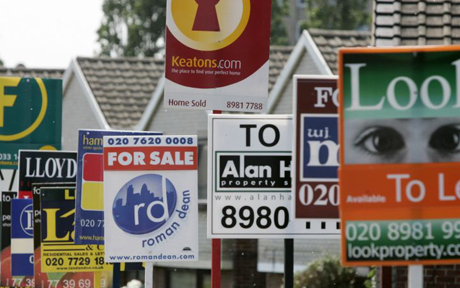UK property prices rose by 7.3% in the year to January, according the latest Halifax house price index figures, chiming with other reports that reflect a widespread property boom.
The Halifax index revealed that house prices resumed their upward path last month, recording a 1.1% increase, following December’s month-on-month fall of 0.5%.
And though the slightly older Office for National Statistics (ONS) figures suggest a smaller nationwide rise – at 5.4% in the year to November – they do confirm the near-stratospheric boom in London compared with the rest of the country, with a rise in the capital of 11.6%.
But while the lack of housing supply relative to demand has become a common theme, there are differences over how the current boom will play out. On the one hand, the Halifax believes household debt will be a constant drag on prices, while chancellor George Osborne believes the boom could last for more than a decade.
Announcing the index figures, Halifax housing economist Martin Ellis said: “With the supply of properties being slow to respond to more buoyant market conditions, stronger demand has resulted in continued upward pressure on house prices.
“Demand has increased against a background of low interest rates and higher consumer confidence, underpinned by signs that the economy is recovering and unemployment falling faster than expected.
“However, continuing pressures on household finances, as earnings fail to keep pace with consumer price inflation, are expected to remain a constraint on the rate of growth of house prices.”
The Halifax figures were released the day after chancellor George Osborne gave evidence to the Lords Economic Affairs Committee. He said: “This is a big challenge for our country. We have got to build more homes.”
Mr Osborne said the Coalition government’s relaxation of planning regulations would, over time, go some way to easing the problem, by stepping up the construction of new homes. “The planning reforms are clearly working,” he said. “You see planning applications up, planning approvals up, and the percentage of planning approvals up.
“Across the board, we are pulling a lot of levers. But this is a historic problem.”
The chancellor, meanwhile, was keen to defend the Help to Buy Scheme which, by underwriting large loans to people without deposits, has attracted criticism for inflating a housing bubble in London and the South East.
Instead, Mr Osborne pointed to the fact that house prices are still well below their 2007 peak, and added that the Bank of England is monitoring the position closely, and has sufficient powers to cool the market if necessary.
Though the ONS House Price Index to November shows a more sedate rise in house prices across the country, they do highlight how London is a different housing market planet compared with the UK as a whole. According to the ONS, Wales saw the second-highest rise, at 5.4%, while the South East saw prices rise by a comparatively modest 4.5%.

